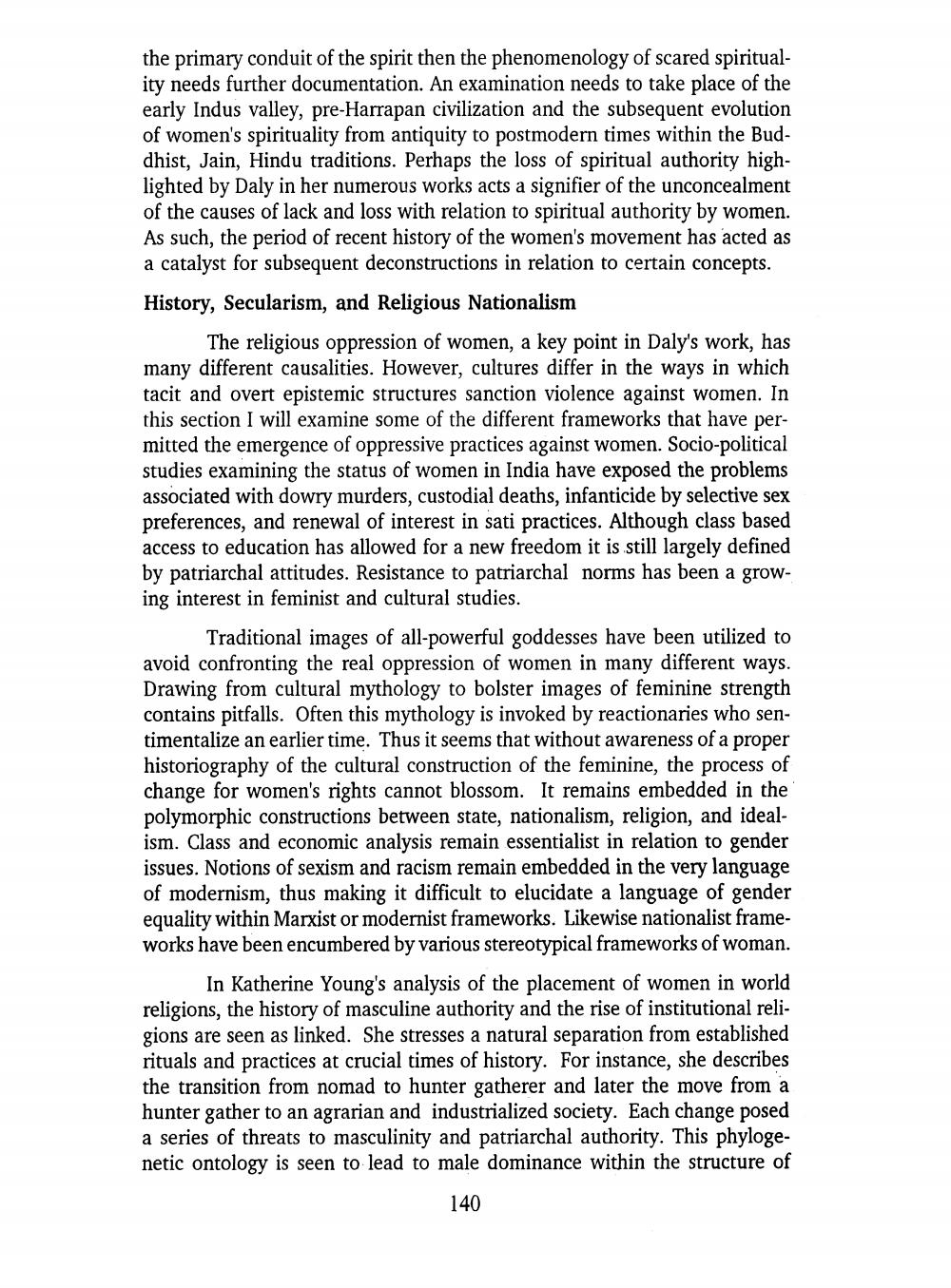________________
the primary conduit of the spirit then the phenomenology of scared spirituality needs further documentation. An examination needs to take place of the early Indus valley, pre-Harrapan civilization and the subsequent evolution of women's spirituality from antiquity to postmodern times within the Buddhist, Jain, Hindu traditions. Perhaps the loss of spiritual authority highlighted by Daly in her numerous works acts a signifier of the unconcealment of the causes of lack and loss with relation to spiritual authority by women. As such, the period of recent history of the women's movement has acted as a catalyst for subsequent deconstructions in relation to certain concepts. History, Secularism, and Religious Nationalism
The religious oppression of women, a key point in Daly's work, has many different causalities. However, cultures differ in the ways in which tacit and overt epistemic structures sanction violence against women. In this section I will examine some of the different frameworks that have permitted the emergence of oppressive practices against women. Socio-political studies examining the status of women in India have exposed the problems associated with dowry murders, custodial deaths, infanticide by selective sex preferences, and renewal of interest in sati practices. Although class based access to education has allowed for a new freedom it is still largely defined by patriarchal attitudes. Resistance to patriarchal norms has been a growing interest in feminist and cultural studies.
Traditional images of all-powerful goddesses have been utilized to avoid confronting the real oppression of women in many different ways. Drawing from cultural mythology to bolster images of feminine strength contains pitfalls. Often this mythology is invoked by reactionaries who sentimentalize an earlier time. Thus it seems that without awareness of a proper historiography of the cultural construction of the feminine, the process of change for women's rights cannot blossom. It remains embedded in the polymorphic constructions between state, nationalism, religion, and idealism. Class and economic analysis remain essentialist in relation to gender issues. Notions of sexism and racism remain embedded in the very language of modernism, thus making it difficult to elucidate a language of gender equality within Marxist or modernist frameworks. Likewise nationalist frameworks have been encumbered by various stereotypical frameworks of woman.
In Katherine Young's analysis of the placement of women in world religions, the history of masculine authority and the rise of institutional religions are seen as linked. She stresses a natural separation from established rituals and practices at crucial times of history. For instance, she describes the transition from nomad to hunter gatherer and later the move from a hunter gather to an agrarian and industrialized society. Each change posed a series of threats to masculinity and patriarchal authority. This phylogenetic ontology is seen to lead to male dominance within the structure of
140




